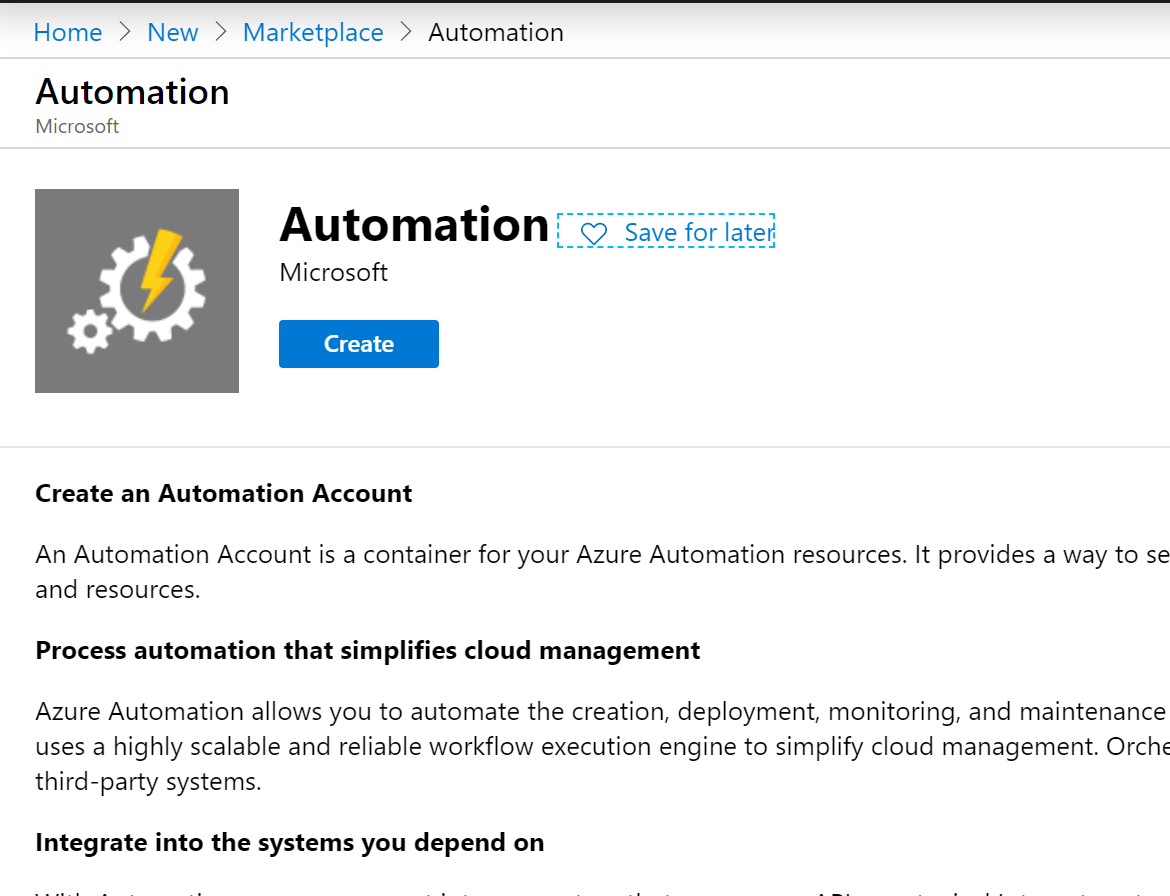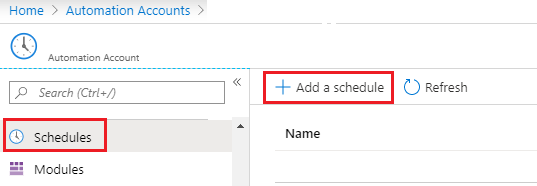Start/Stop Virtual Machines at the same time
This script will allow you to use an Automation Account to Start and Stop all Virtual Machines selected at the same time based on tags.
Subscription Owner Role
To be able to create an Automation Account with a Run As Account you need the Owner RBAC role under the subscription.

Create an Automation Account
If you don’t have an automation account, you need to create one.

Assign RBAC role to Automation Account
To perform the tasks, the Automation account needs the Contributor or Virtual Machine Contributor RBAC role.
Add Tags to Virtual Machine
You need to configure 3 Tags in Virtual Machines :

Tip
You can use only the Startup or the Shutdown rule
startup : 09:00shutdown : 19:00StartStopRule-on/off- If the flag is
onit Will turn on/off the virtual machine - If the flag is
offthe rule will not be applied.
- If the flag is
PowerShell Script
Create a Runbook with the PowerShell script below.
Note: Be aware that you need to change the values inside the variables
$AutomationAccount = "AutomationName"
$ResourceGroup = "ResourceGroup"
$ScheduleName = "schedule-Name"
$ConnectionName = "AzureRunAsConnection"
if ((get-date).DayOfWeek.value__ -in 1..5){
Try
{
# Get the connection "AzureRunAsConnection "
$servicePrincipalConnection=Get-AutomationConnection -Name $ConnectionName
"Logging in to Azure..."
Login-AzAccount -ServicePrincipal -TenantId $servicePrincipalConnection.TenantId `
-ApplicationId $servicePrincipalConnection.ApplicationId -CertificateThumbprint $servicePrincipalConnection.CertificateThumbprint
#Get the offset of the Schedule because the time in Azure Automation is in UTC
$Time = ((get-date (Get-AzAutomationSchedule -Name $ScheduleName -ResourceGroupName $ResourceGroup -AutomationAccountName $AutomationAccount).NextRun.ToString("HH:mm")).AddHours(-(Get-AzAutomationSchedule -Name $ScheduleName -ResourceGroupName $ResourceGroup -AutomationAccountName $AutomationAccount).Interval)).ToString("HH:mm")
#List all vms filtering by tags startup, shutdown and StartStopRule
$VMs = Get-AzVM -Status | Where-Object {$_.Tags.Keys -eq "startup" -or $_.Tags.Keys -eq "shutdown" -and $_.Tags.Keys -eq "StartStopRule" }
#Displays the time used as reference
Write-Output "Time: $($Time)"
ForEach ($VM in $VMs)
{
Write-Output "Processing VM $($VM.Name). StartTime $($VM.tags.startup). ShutdownTime $($VM.tags.shutdown). StartStopRule $($VM.tags.StartStopRule)"
#If is shutdown time and vm is running
if ($VM.tags.shutdown -eq $Time -and $VM.tags.StartStopRule -eq "on" -and $vm.PowerState -eq "VM running") {
Write-Output "Shuting down: $($VM.Name)"
Stop-AzVM -Name $VM.Name -ResourceGroupName $VM.ResourceGroupName -Force
}
#If is start time and vm is NOT running
if ($VM.tags.startup -eq $Time -and $VM.tags.StartStopRule -eq "on" -and $vm.PowerState -eq "VM deallocated") {
Write-Output "Starting: $($VM.Name)"
Start-AzVM -Name $VM.Name -ResourceGroupName $VM.ResourceGroupName
}
}
}
Catch {
if (!$servicePrincipalConnection)
{
$ErrorMessage = "Connection $connectionName not found."
throw $ErrorMessage
} else{
Write-Error -Message $_.Exception
throw $_.Exception
}
}
}
Create a Schedule
The last step is to create a Schedule for your Automation Account.

Don’t forget to attach it to your Automation Account.
